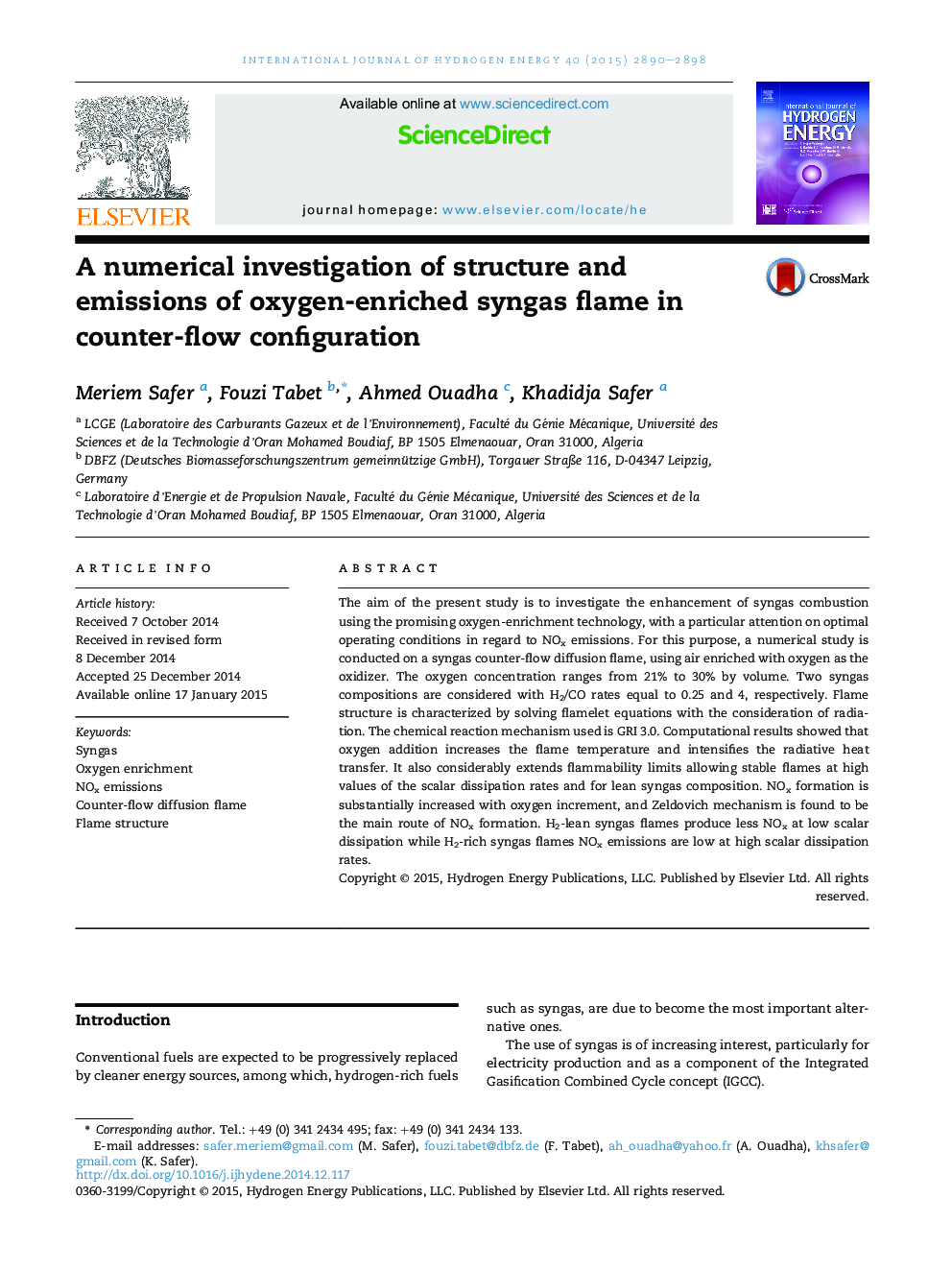| کد مقاله | کد نشریه | سال انتشار | مقاله انگلیسی | نسخه تمام متن |
|---|---|---|---|---|
| 1270053 | 1497467 | 2015 | 9 صفحه PDF | دانلود رایگان |
• For each O2 and low strain rates, temperatures increase more the syngas is H2- rich.
• The opposite behavior is noticed elsewhere.
• H2-lean syngas flames produce less NOx at low strain rates.
• H2-rich syngas flames NOx emissions are low at high strain rates.
• Zeldovich route is the main NOx formation mechanism.
The aim of the present study is to investigate the enhancement of syngas combustion using the promising oxygen-enrichment technology, with a particular attention on optimal operating conditions in regard to NOx emissions. For this purpose, a numerical study is conducted on a syngas counter-flow diffusion flame, using air enriched with oxygen as the oxidizer. The oxygen concentration ranges from 21% to 30% by volume. Two syngas compositions are considered with H2/CO rates equal to 0.25 and 4, respectively. Flame structure is characterized by solving flamelet equations with the consideration of radiation. The chemical reaction mechanism used is GRI 3.0. Computational results showed that oxygen addition increases the flame temperature and intensifies the radiative heat transfer. It also considerably extends flammability limits allowing stable flames at high values of the scalar dissipation rates and for lean syngas composition. NOx formation is substantially increased with oxygen increment, and Zeldovich mechanism is found to be the main route of NOx formation. H2-lean syngas flames produce less NOx at low scalar dissipation while H2-rich syngas flames NOx emissions are low at high scalar dissipation rates.
Journal: International Journal of Hydrogen Energy - Volume 40, Issue 6, 19 February 2015, Pages 2890–2898
